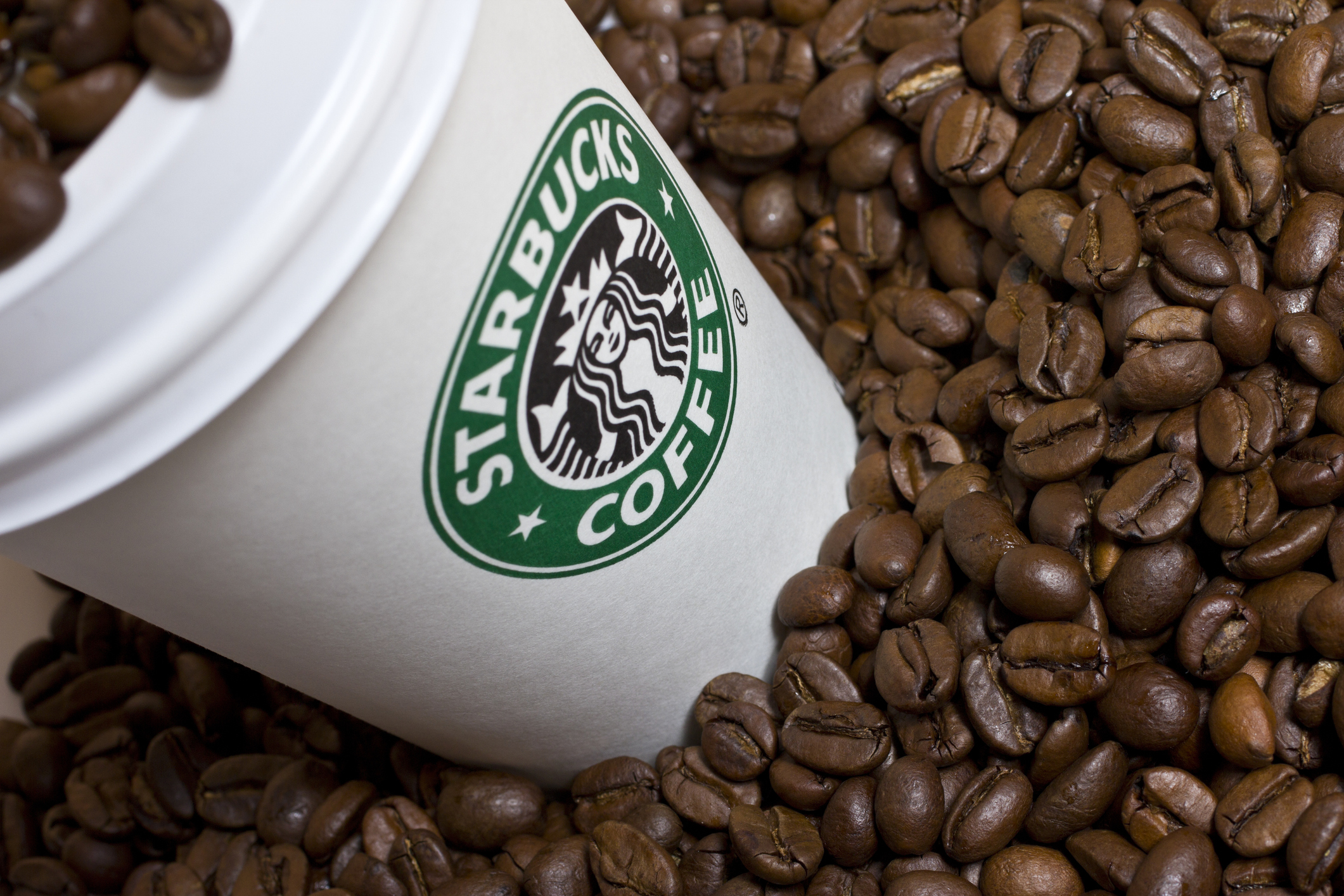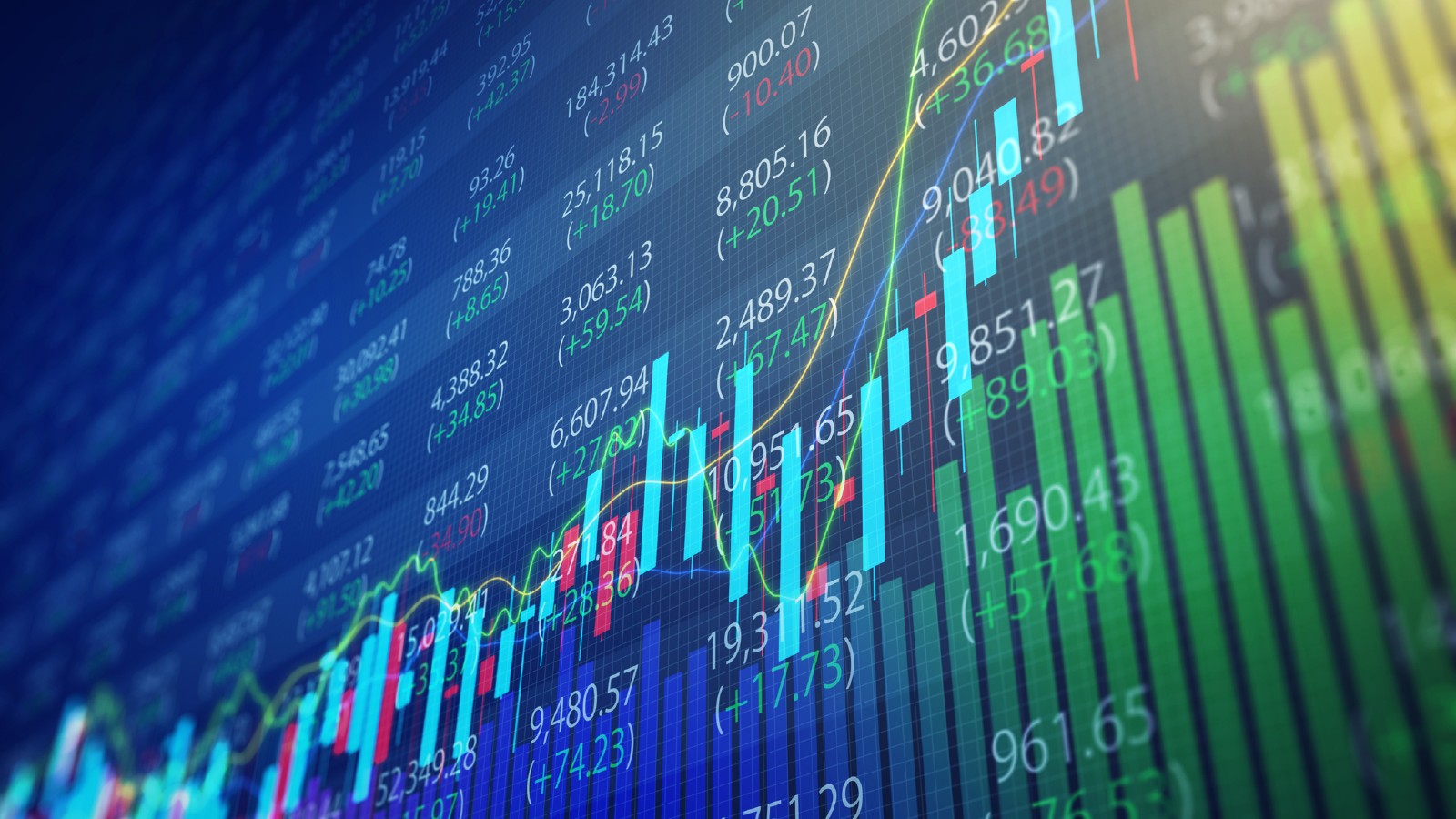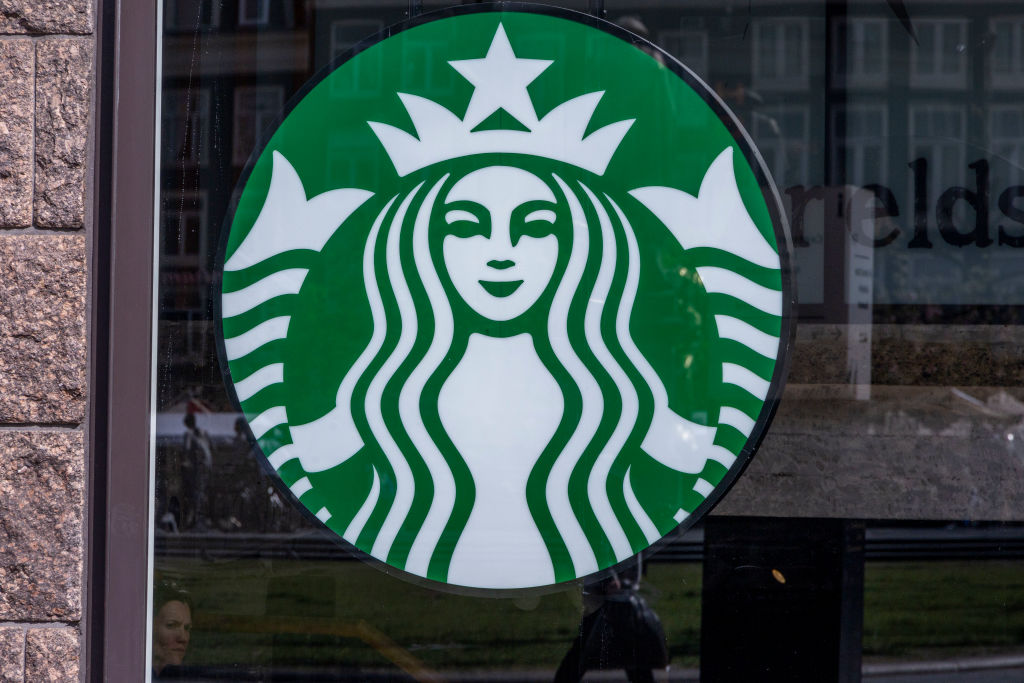Starbucks: Cup Half-Empty or Half-Full?
The stock has stumbled recently, but the company appears to be doing just fine, and we expect a refill of stock value soon.

Shares of Starbucks (symbol SBUX) have been on a caffeine high. On April 13, the price hit an all-time high of $62 on general optimism about consumer spending and particular enthusiasm for a slew of Starbucks ventures. These include licensing its coffee and tea brands for Keurig K-cups, international expansion, fresh cafe concepts and strong prospects for its global pre-packaged coffee business.
But some of the buzz has worn off in a couple of weeks since Starbucks reported fiscal second-quarter earnings for the three months ended April 1. Starbucks brewed its usual strong profits, up 19%, largely due to robust sales in China and the U.S. But as often happens, investors saw other things in the report to fuss about, most notably weakness in Europe, although Europe is small in the big scheme of Starbucks’ world. The market also scoffed at the company’s tall boost in its earnings outlook for the fiscal year that ends in September. Wall Street evidently asked for grande. On May 8, the stock closed at $54, down a bit more than 10% since late April.
Starbucks, though, has not gone flat as a business. It certainly isn’t in a mess like its competitor Green Mountain Coffee, whose stock crashed by half almost at the same time Starbucks lost eight bucks. Starbucks shares remain up 60% since last summer. From the bottom of the bear market in March 2009 through May 8, Starbucks investors have made a 82% total return. But even this small reversal of late means it is timely to inquire whether all, much or only a little of the good news to come is already priced into the stock.

Sign up for Kiplinger’s Free E-Newsletters
Profit and prosper with the best of expert advice on investing, taxes, retirement, personal finance and more - straight to your e-mail.
Profit and prosper with the best of expert advice - straight to your e-mail.
The conclusion: There’s no reason to be seriously alarmed for Starbucks shares. At $54, it trades for 29 times analysts’ earnings estimate of $1.86 for the current fiscal year that ends in September—steep but not outrageous. And favorable earnings trends are on the way. Watch for lower wholesale costs for coffee beans, which account for 15% to 20% of the company’s operating expenses. Cash coffee prices have fallen in 2012 and coffee futures have also eased, enabling Starbucks to lock in lower coffee prices starting late this year and for 2013.
A cadre of food and beverage analysts calls Starbucks the top pick in the restaurant industry. Credit Suisse’s Keith Siegner expects Starbucks to save more than $100 million on coffee costs for fiscal 2013 and 2014, which is major money for a company whose net income is around $1.2 billion a year. Siegner has a 12-month target price of $67. Mark Kalinowski, an analyst for Janney Capital Markets, says assuming lower coffee costs and assuming the company achieves 15% to 20% annualized earnings growth, shares could hit $85 to $95 by 2016. Overall, analysts expect earnings growth at Starbucks to accelerate to 19% per year over the next three to five years. That’s better than the 14.5% rate over the past five years, which is impressive for a company that has nearly $12 billion in sales. A higher growth rate would be spectacular. “Starbucks is at the beginning of a new growth phase for the next five years,” says Brian Sozzi, chief stock strategist for NBG Productions, an independent research firm.
Starbucks’ executives do not dispute these accolades. This company has been left for a has-been before, only for CEO Howard Schultz and the rest of the brass to come up with new growth strategies, beyond simply opening more stores and closing a few. McDonald’s was in the same position and recharged its business and its stock. Starbucks hopes to accomplish something similar.
Troy Alstead, Starbucks’ chief financial officer, says the key is doing more than serving up mochas and ventis. “We fully intend to become a global consumer-packaged goods company, with all of it centered around coffee,” he said in a conversation with Kiplinger’s on April 27. That means taking after Coca-Cola or Kraft and securing more prime space in grocery stores for its products, which for now include whole beans, ground coffee and its instant coffee, Via. Grocery sales currently account for only 7% of Starbucks’ business. But “over time the consumer-packaged business has the chance to be equal in size to our retail store business,” says Alstead. That would go well beyond beans and instant coffee to new lines of food and juices, says Alstead. Last November, Starbucks bought Evolution Fresh, a fresh fruit and vegetable juice company, and is developing a chain of juice bars.
There are still myriad ways for Starbucks to boost its profits from coffee. In a bold move in 2010, Starbucks took back control of its packaged coffee distribution from Kraft, enabling it to demand better shelf space and push more sales of its whole beans, ground coffee and instant coffee in grocery stores. (Kraft sued Starbucks for breach of contract and the two remain in arbitration.) The move is already working: Alstead says the company’s share of the packaged-coffee market is now growing after declining for years.
As part of the move to capitalize on packaged coffee, Starbucks struck a deal to license its coffee and Tazo-branded tea to Green Mountain Coffee for individual K-cups used in Green Mountain’s Keurig single-cup coffee makers. Already, in just five months, Starbucks has shipped more than 230 million K-cups, enough to gain a 21% share of the single-cup business. And in December, Starbucks will roll out an at-home premium espresso machine called Verismo. This is not meant to compete with the inexpensive K-cups but to be a high-end connoisseur brewer along the lines of Nespresso’s home-espresso machine. The Verismo is expected to start contributing to earnings in fiscal 2013.
In addition to grocery stores, Starbucks is taking its famous logo and flavors to fast-growing foreign countries, another reason to expect surging earnings. Starbucks has been in China since 1999 and plans to triple its stores there to 1,500 from 500 by 2015. Sales at existing China stores, an important indicator of success, have increased at a more than 20% clip for the past two years.
Then there’s Brazil, one of the most-avid coffee-consuming countries (and biggest growers) in the world. Starbucks has fewer than 50 stores there now, many of them in fancy shopping malls in Rio and Sao Paulo, but Alstead says the company intends to open “hundreds of stores over time” that would appeal to office workers and tourists. The first stores in India will open in August, with Vietnam slated for openings by the end of the year. All told, Starbucks gets 22% of its sales abroad, a testament to the universal appeal of coffee to go and to the unlimited potential of American retail might.
Follow Jennifer on Twitter or become her fan on Facebook.
ORDER NOW: Buy Kiplinger’s Mutual Funds 2012 special issue for in-depth guidance on the only investments you need.
Get Kiplinger Today newsletter — free
Profit and prosper with the best of Kiplinger's advice on investing, taxes, retirement, personal finance and much more. Delivered daily. Enter your email in the box and click Sign Me Up.

-
 6 Stunning Waterfront Homes for Sale Around the US
6 Stunning Waterfront Homes for Sale Around the USFrom private peninsulas to lakes, bayous and beyond, Kiplinger's "Listed" series brings you another selection of dream homes for sale on the waterfront.
By Charlotte Gorbold Published
-
 Six Reasons to Disinherit Someone and How to Do It
Six Reasons to Disinherit Someone and How to Do ItWhether you're navigating a second marriage, dealing with an estranged relative or leaving your assets to charity, there are reasons to disinherit someone. Here's how.
By Donna LeValley Published
-
 4 Turnaround Stocks to Consider – and 2 More to Keep an Eye On
4 Turnaround Stocks to Consider – and 2 More to Keep an Eye OnA turnaround stock is a struggling company with a strong makeover plan that can pay off for intrepid investors.
By Nellie S. Huang Published
-
 Starbucks Stock Pops as Turnaround Efforts Lead to Earnings Beat: What to Know
Starbucks Stock Pops as Turnaround Efforts Lead to Earnings Beat: What to KnowStarbucks stock is higher Wednesday after the coffee chain beat expectations for its fiscal first quarter as its "Back to Starbucks" efforts take shape.
By Joey Solitro Published
-
 Stock Market Today: Markets Waver as Inflation Continues to Ease
Stock Market Today: Markets Waver as Inflation Continues to EaseStocks gave up early gains as waning consumer price inflation leaves rate-cut bets essentially unchanged.
By Dan Burrows Published
-
 What's Behind Starbucks Stock's New Sell Rating?
What's Behind Starbucks Stock's New Sell Rating?Starbucks stock has rallied hard since Brian Niccol was tapped as the coffee chain's new CEO, but one analyst thinks turnaround plans will be costly.
By Joey Solitro Published
-
 Why Is Warren Buffett Selling So Much Stock?
Why Is Warren Buffett Selling So Much Stock?Berkshire Hathaway is dumping equities, hoarding cash and making market participants nervous.
By Dan Burrows Published
-
 If You'd Put $1,000 Into Google Stock 20 Years Ago, Here's What You'd Have Today
If You'd Put $1,000 Into Google Stock 20 Years Ago, Here's What You'd Have TodayGoogle parent Alphabet has been a market-beating machine for ages.
By Dan Burrows Last updated
-
 Stock Market Today: Mixed Earnings, Election Worries Weigh on Equities
Stock Market Today: Mixed Earnings, Election Worries Weigh on EquitiesA mixed batch of corporate reports and rising election anxiety led to another down day for stocks.
By Dan Burrows Published
-
 What Starbucks' Latest Dividend Hike Means for Investors
What Starbucks' Latest Dividend Hike Means for InvestorsStarbucks disclosed preliminary Q4 results and suspended its full-year guidance, but also extended its long history of dividend hikes. Here's what you need to know.
By Joey Solitro Published